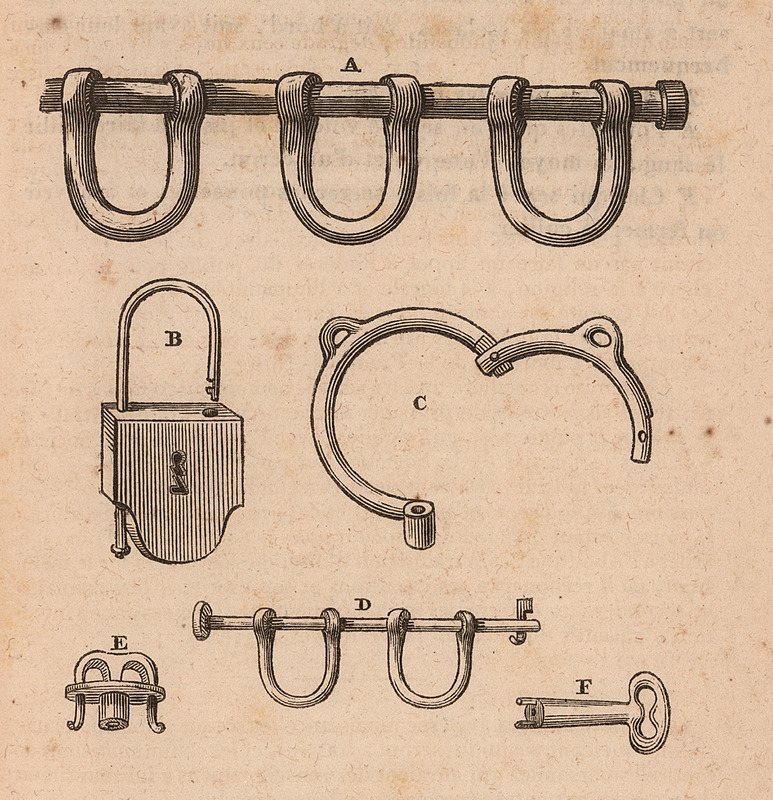Shackles, Manacles, and Padlocks Used in the Slave Trade, early 19th cent.

This illustration appears in a booklet published by a French society against the slave trade. The various implements used by slave traders are identified by letter: A, the metal bar onto which were attached manacles that held the feet of the enslaved. Each bar was about six feet long with eight manacles. Eight captives could be attached to each bar if only one foot of each was attached, or four persons if both feet were attached. This illustration only shows half of the bar, called the barre de justice; the other half was pierced with a hole so that a padlock (B) could be placed through it to hold the manacles. C, a hinged iron collar that could be placed around a captive's neck; metal rings could be inserted into the small holes and a chain passed through these rings so that captives could be linked to one another and thus be secured on board ship or before their embarkation [see image JCB_01203-5]; D, wrist manacles; E, thumbscrew; and F, a key for the wrist manacles and the metal collar (pp. 3-4). See also image JCB_01203-4.
Image Title
Shackles, Manacles, and Padlocks Used in the Slave Trade, early 19th cent.
RegID
SI-OB-775
Title
Shackles, Manacles, and Padlocks Used in the Slave Trade, early 19th cent.
Source
Faits relatifs a la traite des noirs (published by the Société de la morale Chrétienne. Comité pour l'abolition de la traite des noirs; Paris, 1826), p. 3. (Copy in the John Carter Brown Library at Brown University)
Language
French
Item sets
Slave Ships & the Atlantic Crossing (Middle Passage)
Spatial Coverage
Atlantic
Reproduced In
Faits relatifs a la traite des noirs (published by the Société de la morale Chrétienne. Comité pour l'abolition de la traite des noirs; Paris, 1826), p. 3.
Researchers
Handler, Jerome; Tuite, Michael; Randall Ericson; Henry B. Lovejoy Graduate Research Assistants: Tiffany Beebe; Travis May
Identifier
JCB_01203-2